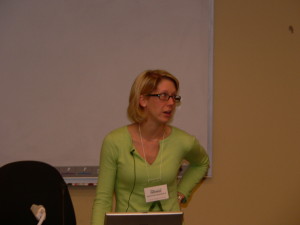Objectives: Shiga toxin–producing Escherichia coli (STEC) are an important cause of foodborne disease, yet global estimates of disease burden do not exist. Our objective was to estimate the global annual number of illnesses due to pathogenic STEC, and resultant hemolytic uremic syndrome (HUS), end-stage renal disease (ESRD), and death.
 Materials: We searched Medline, Scopus, SIGLE/OpenGrey, and CABI and World Health Organization (WHO) databases for studies of STEC incidence in the general population, published between January 1, 1990 and April 30, 2012, in all languages. We searched health institution websites for notifiable disease data and reports, cross-referenced citations, and consulted international knowledge experts. We employed an a priori hierarchical study selection process and synthesized results using a stochastic simulation model to account for uncertainty inherent in the data.
Materials: We searched Medline, Scopus, SIGLE/OpenGrey, and CABI and World Health Organization (WHO) databases for studies of STEC incidence in the general population, published between January 1, 1990 and April 30, 2012, in all languages. We searched health institution websites for notifiable disease data and reports, cross-referenced citations, and consulted international knowledge experts. We employed an a priori hierarchical study selection process and synthesized results using a stochastic simulation model to account for uncertainty inherent in the data.
Results: We identified 16 articles and databases from 21 countries, from 10 of the 14 WHO Sub-Regions. We estimated that STEC causes 2,801,000 acute illnesses annually (95% Credible Interval [Cr.I.]: 1,710,000; 5,227,000), and leads to 3890 cases of HUS (95% Cr.I.: 2400; 6700), 270 cases of ESRD (95% Cr.I.: 20; 800), and 230 deaths (95% Cr.I.: 130; 420). Sensitivity analyses indicated these estimates are likely conservative.
Conclusions: These are the first estimates of the global incidence of STEC-related illnesses, which have not been explicitly included in previous global burden of disease estimations. Compared to other pathogens with a foodborne transmission component, STEC appears to cause more cases than alveolar echinococcosis each year, but less than typhoid fever, foodborne trematodes, and nontyphoidal salmonellosis.
Applications: Given the persistence of STEC globally, efforts aimed at reducing the burden of foodborne disease should consider the relative contribution of STEC in the target population.
Majowicz Shannon E., Scallan Elaine, Jones-Bitton Andria, Sargeant Jan M., Stapleton Jackie, Angulo Frederick J., Yeung Derrick H., and Kirk Martyn D..
Foodborne Pathogens and Disease. June 2014, 11(6): 447-455.
